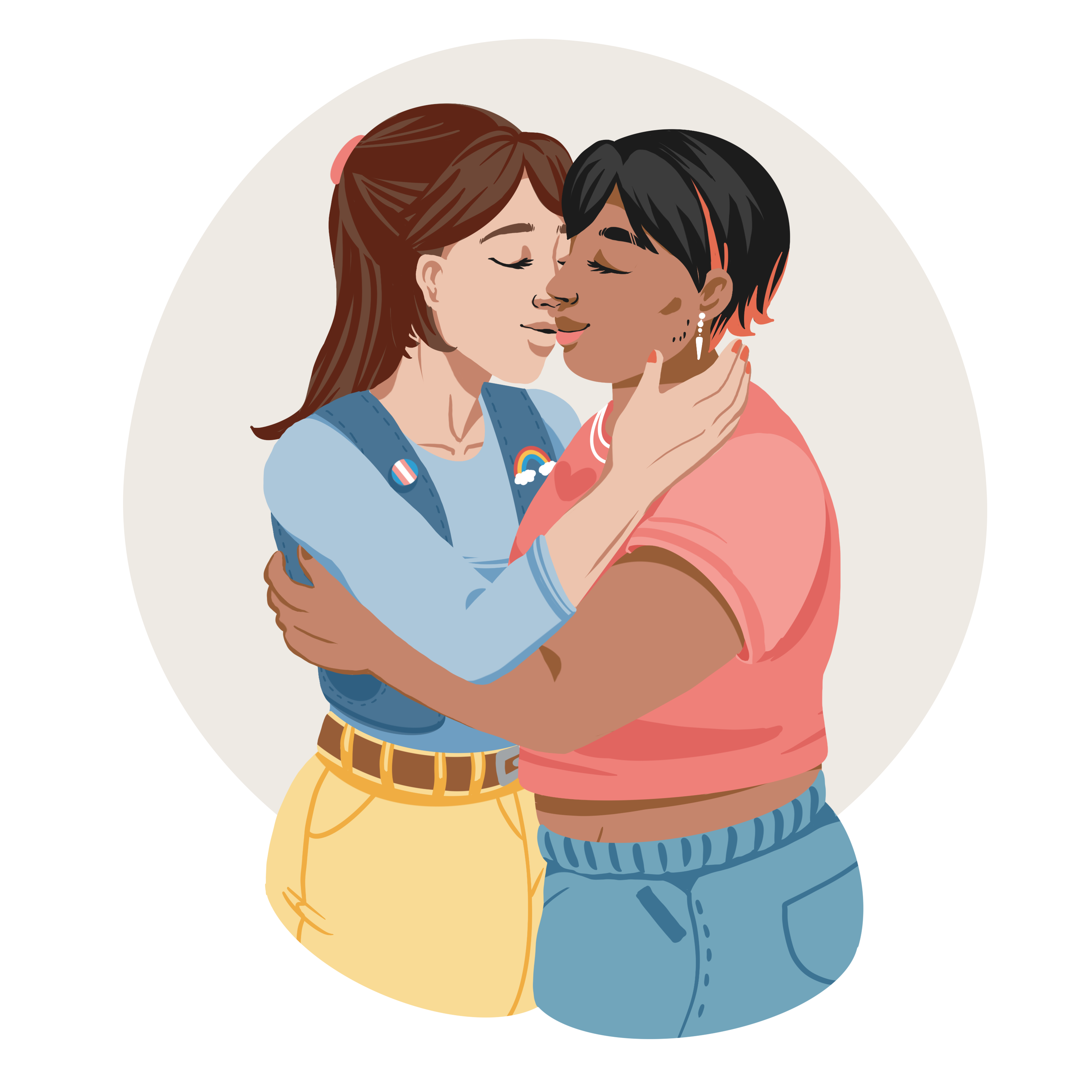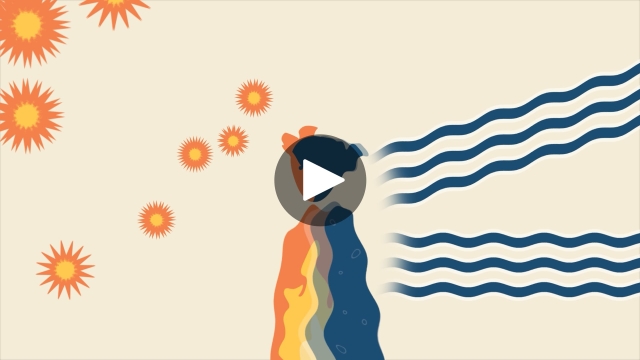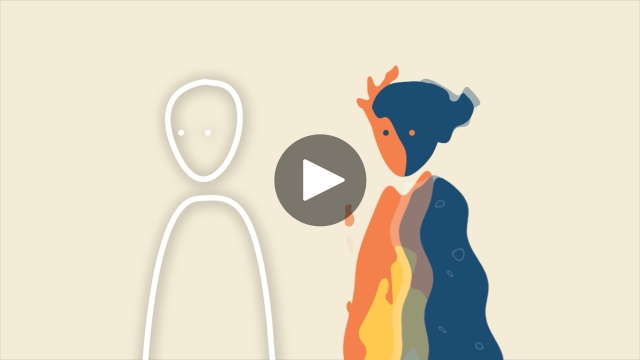Demystifying sex drive & sexual response
Learn more about concepts surrounding "sex drive," and how gender-affirming care can affect one's experiences of sexual response or desire.

Affirming or embodying our gender is a profound journey of self-discovery, and it affects many parts of our lives, including how we understand and express our sexuality. As we continue to grow, what we desire may change or stay the same.
Gender-affirming surgery, hormone therapy, and other steps towards gender affirmation The ways a person can be supported in expressing their self-identified gender. This may involve supporting social transition steps or changes in gender expression. can lead to changes in our experiences of desire and in our ability to participate in specific sexual activities. For example:
- Some of us may feel more in tune with our body, while others might feel less so.
- We might find that we are interested in different kinds of sex and enjoy different parts of our body than before.
- Some things we used to want may no longer interest us.
While many of these changes are welcome, we may also experience discomfort, or a sense of loss or ambivalence about them.
Understanding all of this can be challenging, and we may feel alone or shy to talk about it with others. However, people have a wide range of experiences, and learning about these diverse experiences can help us to feel more connected with our own experience and more comfortable as we move forward on our own journey.
Arousal and desire
When it comes to our sexuality, it can be helpful to understand the concepts of arousal and desire.
Arousal
Arousal is a physiological response which can include things like: blood flow to the genital area, heightened awareness and sensitivity, and increased heart rate and breathing.
As explained in the video above, arousal is controlled by "accelerators" (Sexual Excitation System) and "brakes" (Sexual Inhibition System).
- Accelerators include physical touch, emotional intimacy, sensory cues, feeling neutral/good in our gender/body, positive sexual experiences.
- Brakes include stress, fatigue, negative emotional experiences (e.g., dysphoria), relationship difficulties.
Desire
Desire is the mental and emotional experience of wanting sex.
As explained in the video above, educator and researcher Dr. Emily Nagoski describes two types of sexual desire: spontaneous desire and responsive desire.
- Spontaneous desire happens without any obvious triggers, in anticipation of pleasure.
- Responsive desire happens with more gradual build-up, in reaction to pleasure.
- Everyone experiences desire differently, and it often changes over time.
Sex educator and researcher Dr. Emily Nagoski offers several worksheets for exploring your own experiences of arousal and desire, as part of her book, Come as You Are.
The exercises in these worksheets are helpful for everyone. However, the language and research were aimed at monogamous cisgender Refers to people who are non-trans, i.e. whose gender matches their assigned sex at birth. women. Because of this, some worksheets use gendered language. Future versions will be gender inclusive.
How our gender journey can affect desire & arousal
Affirming our gender can be profound and full of complex experiences and emotions.
This is true whether or not we seek medical or surgical treatment, and whether or not we experience dysphoria.
These factors—along with other factors that impact how we think and feel about ourselves and our bodies, like our relationships, cultural messages, and aging—can influence our experiences of arousal and desire.
Gender can have a deep impact on our experiences of desire and arousal:
- Dysphoria and disconnect can make embodied experiences challenging.
- Gender-affirming treatments can make us feel more at home in our bodies, but may bring some challenges.
Many changes can occur on our gender journeys, such as:
- Changes in our bodies
- Changes in our experiences of attraction
- Changes in our relationships
- Changes in how others see us
- Changes in how we see ourselves
All of these changes can impact our experiences of desire and arousal.
How hormone therapy can affect desire & arousal
When it comes to changes that are associated with hormones, there are some common experiences.
Broadly speaking, people with more testosterone experience more spontaneous desire.
- Many people notice this shift shortly after they start testosterone.
- This may be because we can become more sensitive to sexual accelerators (physical touch, sensory cues) than before.
- This can be overwhelming at first, but it often settles down with time.
Other potential changes from testosterone therapy:
- Our genitals may increase in size and sensitivity.
- This can lead to unintentional stimulation.
- This can be positive in some circumstances and distracting or irritating in others.
- Our genitals may produce less fluid and the tissue may become thinner.
- This may make them more vulnerable to friction and inflammation.
- Our experience of orgasm may change.
Broadly speaking, when people have less testosterone and/or more estrogen, we often experience:
- A change from having more spontaneous desire to having more responsive desire.
- An increased sensitivity to things that can pause or slow down our sexual responses.
For some of us, this is a comfortable change. For others, this can be a difficult experience, and we might want to increase our experiences of desire and arousal.
Increasing our experiences of desire and arousal
Many people think the best way to increase our experiences of desire and arousal is to add more accelerators—in other words, add more "sexy stimuli."
However, research suggests that it can often be more helpful to focus on reducing or removing things that act as brakes to our sexual response. Reducing the ‘brakes’ creates more space for responsive desire to express itself.
Sometimes, working with our primary care provider A person’s main health care provider in non-emergency situations such as check-ups and referrals. Family doctors, general practitioners (GPs) and nurse practitioners (NPs) are all primary care providers. to adjust our hormone levels can help as well.
Other changes
Other potential changes from estrogen therapy include:
- Our genitals may become smaller.
- Our physical experience of arousal may change.
- E.g., There may be a decrease in firmness, duration, and orgasmic fluid (ejaculate).
- The places on our bodies where we feel sensations of pleasure may change.
- Our experiences of orgasms may change.
- They may be more intense or more diffuse.
- They may be less closely connected to ‘erections’ and the release of orgasmic fluid.
Getting used to changes
Getting used to physical, emotional and sexual changes can take time, and relationship dynamics may change as we change.
Some suggestions include:
- Keep exploring & keep communication open as changes occur.
- Try different motions, techniques, activities, toys, prosthetics.
- For support with any concerns, speak with a primary care provider A person’s main health care provider in non-emergency situations such as check-ups and referrals. Family doctors, general practitioners (GPs) and nurse practitioners (NPs) are all primary care providers. about treatment options.
Putting it all together
This tool provides the information in an interactive video format.






